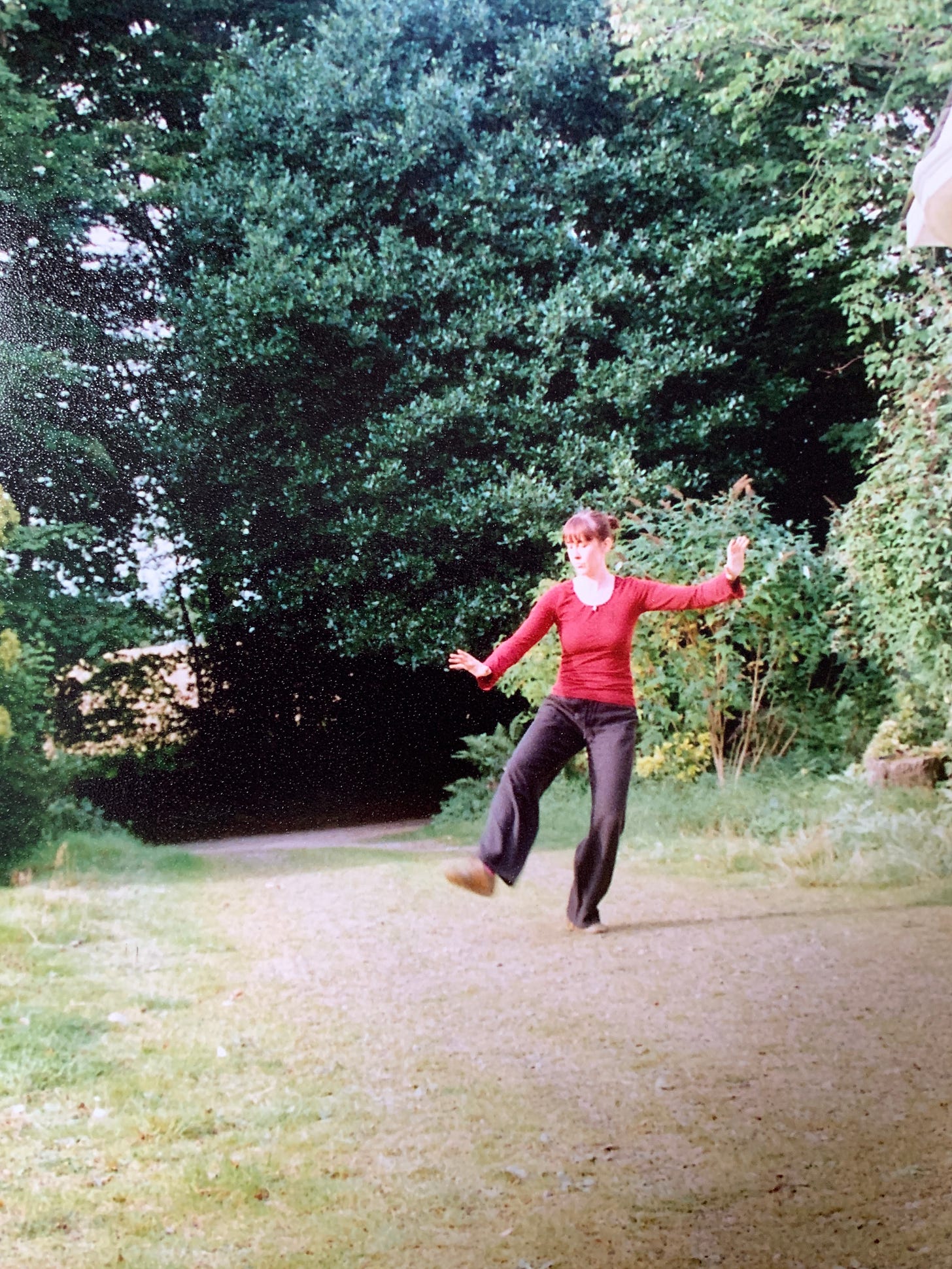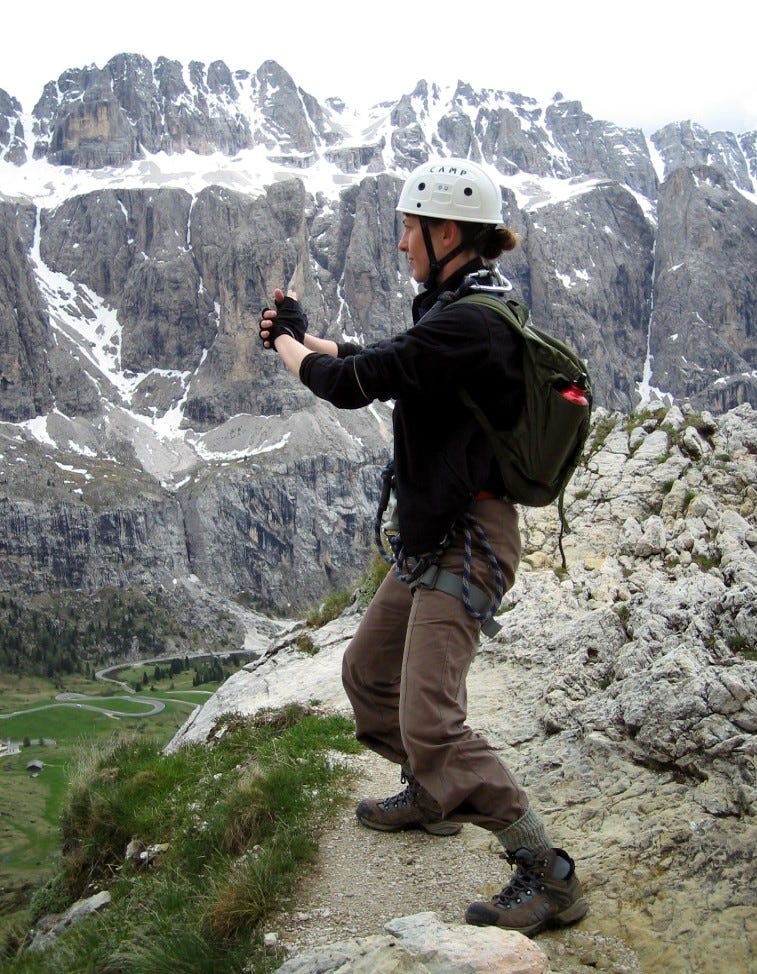
Winter Solstice approaches and I am packing to go and see dear friends and beloved family over Solstice and Christmas, both of which I celebrate. I wanted to post something special for you, so here is one of my all-time favourite teaching stories, a Taoist parable, if you like. I recommend not reading it, but instead, make yourself a cup of tea, no matter if it’s finest jasmine, oolong, Yorkshire Tea with milk, or Barry’s Tea if you’re in Ireland, (ah, the golden elixir…) then, press play on the audio version.
A little about the story. For 6 years I lived in a big old house in Aberdeenshire with my then husband, and a rolling roster of most of my band, their partners, artist friends, a baby, some WWOOFers, many mice, a dog called Vita and a very old cat called Smokey. There are a hundred and one stories I could tell you about that era, for instance how Bonnie ‘Prince’ Billy ended up going back home from our recording studio to America with my Liberty print pyjama trousers. Or the time when I drove back in the dark and snow the 20 miles on my moped from teaching T’ai Chi in Inverurie, with my sabre slung across my back and a roadkill hare over my lap which became my midweek supper rather than the fox’s breakfast. One of the very few times I legit felt ‘cool’.
But I digress. I never did find a good enough T’ai Chi master in Scotland so I saved every penny I earned and Ebayed all the things I neither needed nor used, to go study every couple of months for 4 intensive days at a time back in London at The T’ai Chi Centre. I would sometimes borrow one or two books from my teacher’s extensive bookshelves full of volumes on Eastern and Western mysticism, martial arts, philosophy and psychology. The Clay Ball Story resonated so deeply with my path and experience, which I almost never saw reflected in any other tales, that I committed it to memory and it became part of my teaching lexicon. I told it while teaching Wild Twins and recently at Schumacher College, with Dark Mountain.
The story below comes from, I think, a 1980s American book about women in traditional Eastern martial arts, yet I have searched high and low for a name for the book or a copy of it, but have drawn a blank. The book appears to be missing or lost, in what now feels like a classic Taoist tale in itself. A few years ago I reconstituted the story from memory and wrote it down in my own words. It has several allusions to important themes in Taoist thought and praxis, including being a clear exposition of ‘using the false to cultivate the real’. I will just add a few small footnotes for the interested, and leave the story to speak for itself.
All good wishes and season’s greetings to everyone who reads this. Thank you so much for your support and interest. I send my hearty gratitude to all the paying subscribers who are making my work here writing and making art possible. I’ll have great news about my upcoming book, courses, classes and more in the New Year. But for now, here is my gift for you. I hope you enjoy it. Please feel free to share it with friends. All the midwinter mistletoe best to you, Caro.
The Clay Ball Story - audio version
The student of internal martial arts had been studying diligently for many years with her master and had worked her way up through the school. One day he said, ‘It is time for you to go and work for two years with the old woman on the mountain, you are ready to study with her now.’
Feeling rather pleased with herself, she packed her bundle and practice swords, and said goodbye to her classmates, who were all very impressed with her, which she secretly loved, even as she brushed it off. She headed up the mountain the following day, looking forward to learning secret techniques and special moves, maybe some subtle power-building nei kung1 breathing exercises.
She passed quickly through the ancient forest and up to the top of the treeline, not noticing how the birds fell silent as she rushed her way through their territory. At the edge of the forest was an old shack, quite run-down, with a veranda around the front and sides. ‘Right, you’re here,’ said the old woman, ‘put down your things and come sweep this porch, then you can make me some supper.’
Not even asking her name! What an affront. This old lady has forgotten all her social skills… thought the younger woman. But she knew it would be a grave offence to say anything, and cause loss of face. So she bent to the tasks and at nightfall slept like a dog on the veranda on her bedroll.
In the morning she had decided to put the slights behind her and was again looking forward to her special training.
‘Follow the sound of water and make your way down to the riverside,’ said the old woman, ‘you’ll find the whole area coated in fine clay washed down from the glacier. I want you to take a handful of it and roll it between your hands until it is a perfectly spherical ball, then place the clay ball on the flat rocks beside the river to dry. Do this all day as many times as you can. Come back when it is time to cook my supper.’
Mortified, the young woman headed straight to the river, muttering under her breath and wishing herself back at her teacher’s school, pushing hands with the lads or cracking jokes whilst drinking jasmine tea, telling tall tales of scrapes and clever escapes. All day long until her hands were chapped and chilled, she rolled the balls, returning back to the shack in time to sweep and cook food, then fall asleep, shattered.
The next morning, expecting another crazy task, she got only a nod and a dismissive wave of the hand to send her back to the riverbed, to roll clay balls and leave them drying in the sun. At the end of the week she thought, ‘Surely some change is due?’ At the end of the month she thought, ‘Is this some kind of joke?’ After two months, she thought, ‘Am I in a version of hell, as a punishment?’ After six months, she’d been through all five stages of grief, and made up a few of her own, based loosely around fury and retribution. After 11 months of this working, sweeping, cooking, sleeping, she had accepted that this was her life for the next 13 months, and she stopped thinking about it at all. She noticed the birdsong changing as the days progressed and as the seasons transformed. After a year and a day, the entire river valley was covered with even little clay balls, as far as the eye could see, on every flat or nearly flat surface. There was no clay left to use, not even any rough silt.
The following day, the old woman called the student into her hut and said, ‘Today, I want you to go down to the river and taking a clay ball in each hand, squeeze your fingers together until the balls are crushed back to dust. Then sweep this dust back into the riverbed, from where you got it, and leave no trace at all. Do this with every single clay ball, be sure not to leave even one unpulverized.’ The student got up in a daze, and headed back down to the river, cursing the stupid crone under her breath. Mindless, idiotic, ridiculous work, backbreaking, limb-chilling pointless task… Within a fortnight she was settled in the rhythm of the days again, and had stopped swearing under her breath, or going through revenge fantasies in her mind. In fact, sometimes when she tried to recall what she had been thinking about all day long at the water’s edge, she found she couldn’t. Perhaps her mind had wandered-off, perhaps she had ‘vagued-out’. But no, when she paid attention to what her mind was doing, well, it wasn’t wandering, it was just very still, no chatter at all.
After another year and a day, the old woman came out early to where the student was sleeping and woke her with her bundle and some tea. ‘Time to go back down the mountain. You have done everything you came to do.’ And with that the old woman went behind the huge old tree that grew beside the hut, or perhaps into the tree, it was hard to tell. The younger woman drank the tea, shouldered her bundle, took a last glance around the glade, bowed almost imperceptibly, and headed down the mountain path. The birds were singing as she stepped quietly through the trees. Mosses cushioned the ground in every hue of green. Beetles drummed their feet on the soil.
Halfway down the mountain, in the thick of an old-growth wood, too steep for coppicing, a band of thieves2 was hiding out, after robbing carriages on the valley-floor road. Seeing a lone woman walking through the woods, the five men rubbed their hands together in spiteful glee, the universal gesture of corruption. This would be fun, they thought, as one. Together they approached the woman, whose expressionless face proved just how stupid she was to be walking there, and how richly she deserved what was coming. She looked right at them then, put down her bundle and reached up spontaneously above her head. Effortlessly grasping the dry branch of bony oak in her hands, with an echoing ‘crack!’ it came away from the tree, and she stood, naturally, holding it like a staff, or perhaps an oar, as though to push out a boat upon a still lake.
The bandits took fright at such unexpected power and grace, the woman’s sudden movement, and most unnerving all, her apparent lack of fear. ‘A vengeful nature-spirit! Run!’ cried their leader, and off they sped, leaving their booty, forgetting their weapons, pissing themselves.
The student watched until the robbers were gone, the noise of their escape making it clear as day where they were heading, into the next valley. Gazing around, she quietly took in the beauty of the place where she stood, then put down the branch underneath the tree from which it came, picked up her bundle, and carried on back down the path, towards her classmates, her teacher, and home.3
Traditional Taoist teaching story, source unknown, this version by Caroline Ross 2021.
Neigong, also spelled nei kung, neigung, or nae gong, refers to Chinese breathing, meditation, somatics practices, and spiritual practice disciplines associated with Daoism and especially the Chinese martial arts.
Five ‘bandits’, ‘thieves’ or ‘robbers’ are common names in Taoist internal alchemical writing for (fixation upon) the five senses. Lao Tzu, Chuang Tzu and others extensively warn against intoxication by the senses if one wishes to cultivate mind of Tao.
No matter how many times I reread or tell this story, my voice always cracks at the end, and I come close to tears. Ah, well. Deep thanks to whoever first told this tale, however long ago, you are my teacher too.
This week’s good thing. Beautiful work with earth, clay, people and buildings, by Becky Little. Here’s some actual clay balls, ‘dorodangos’. You can see more excellent work on her website.






